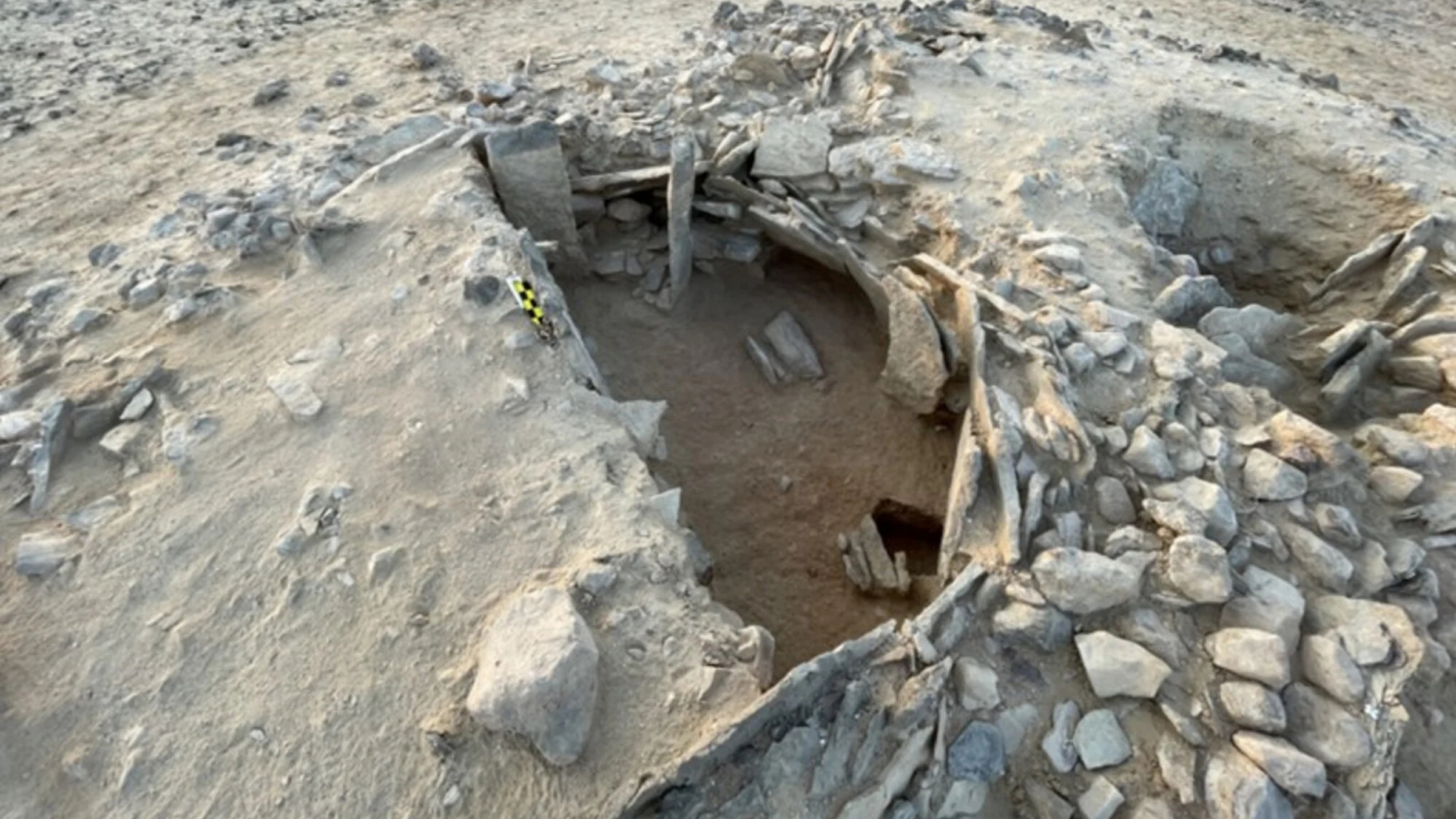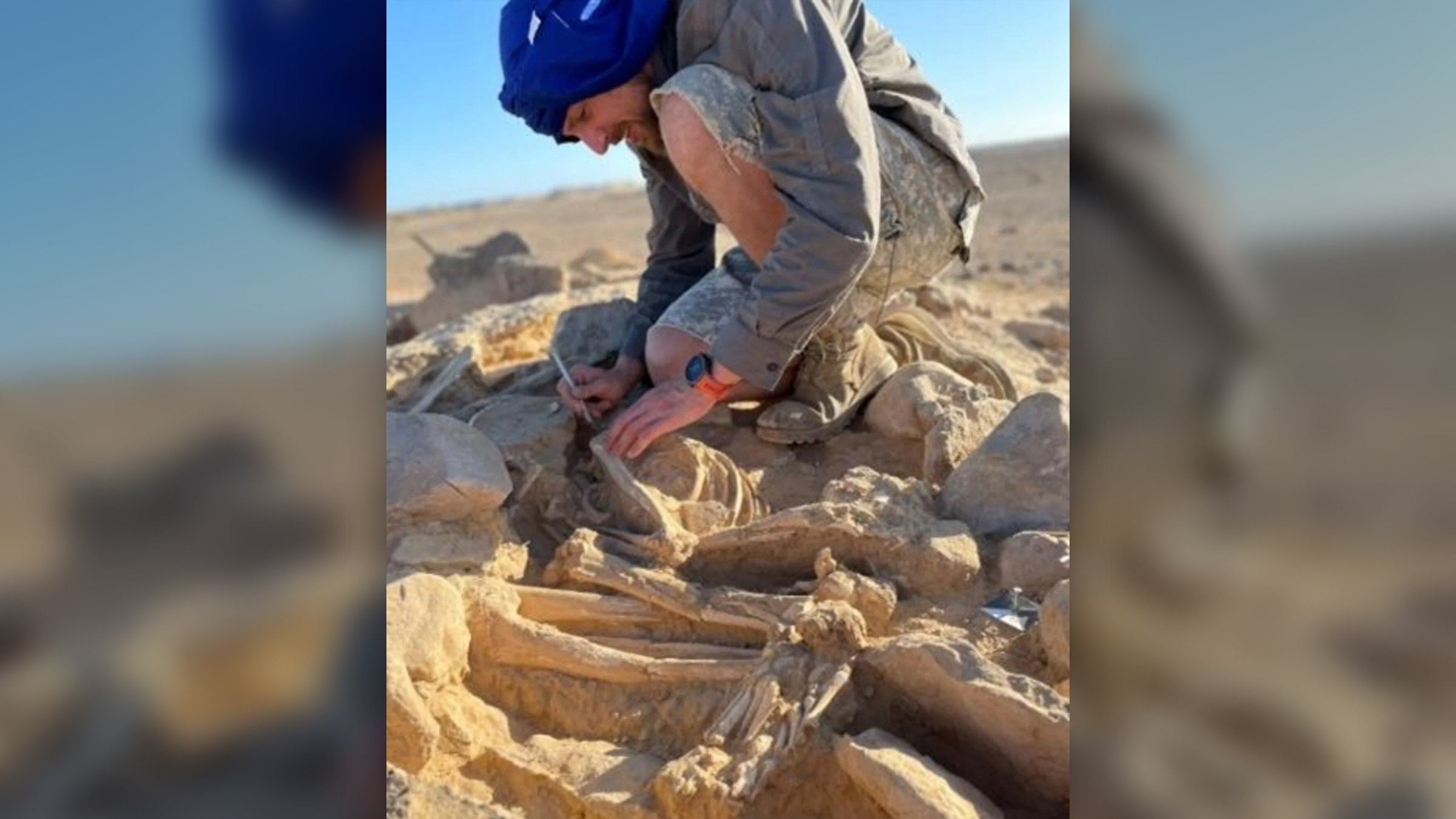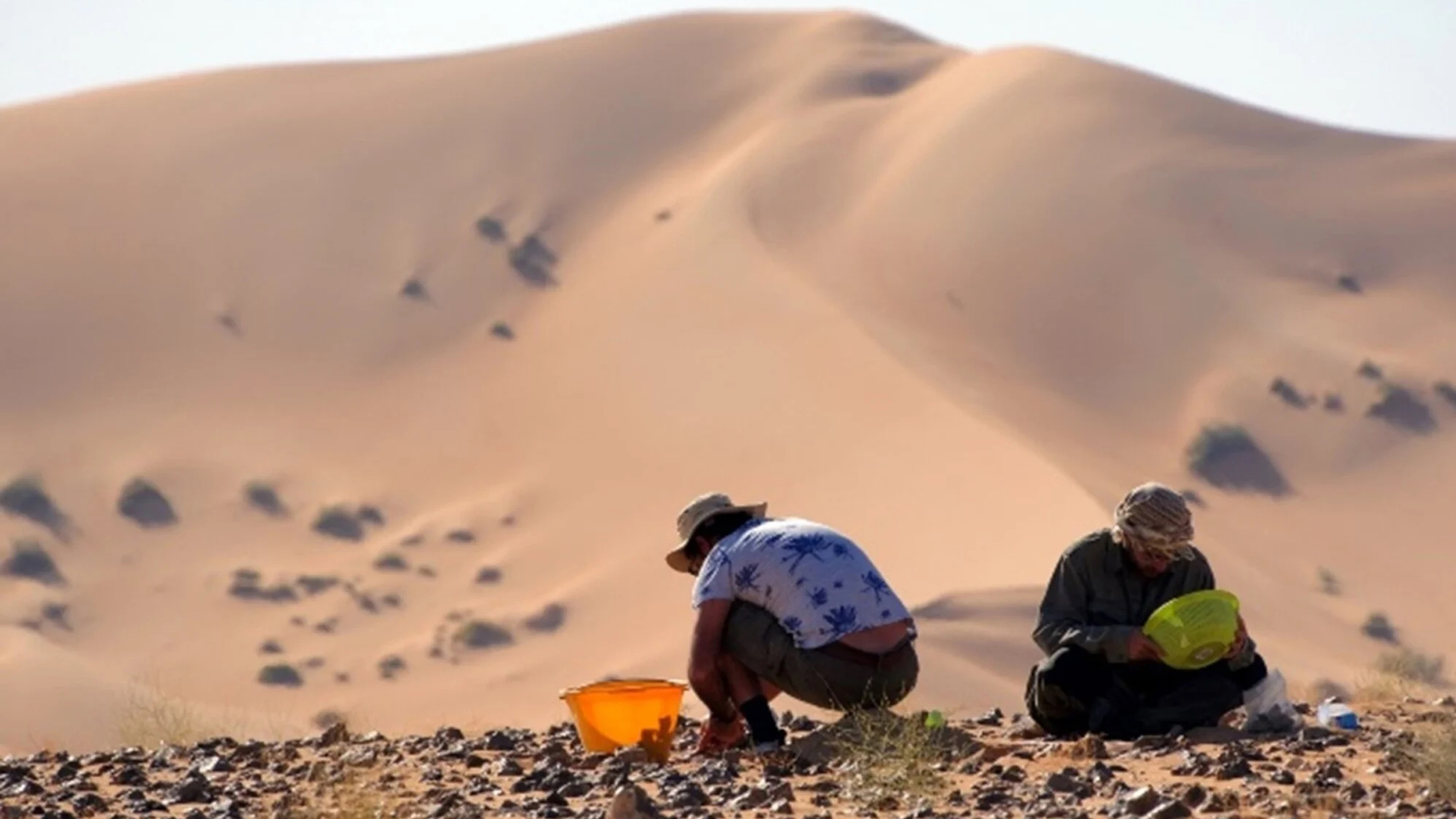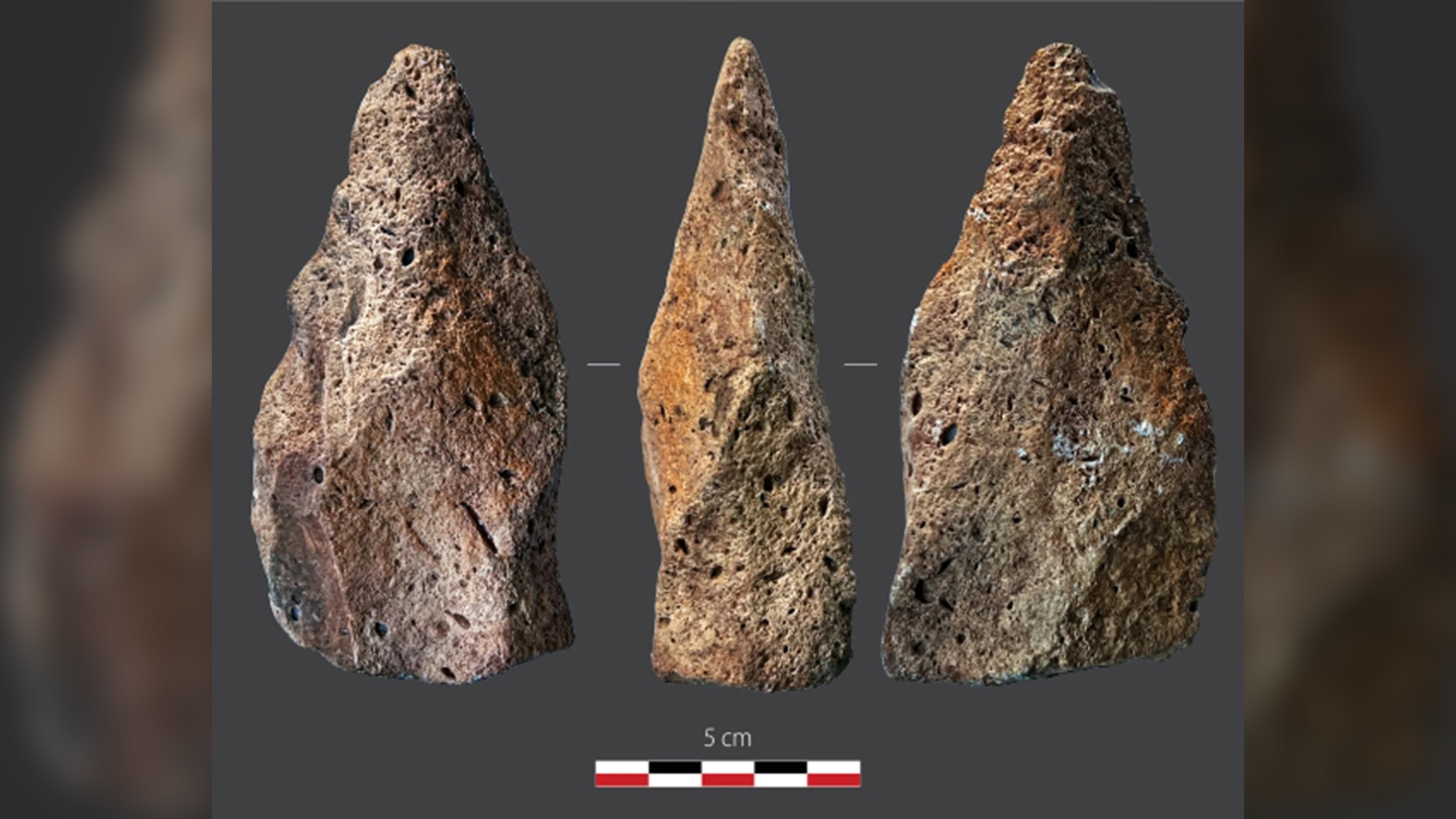
Archaeologists have found the remains of dozens of people who were buried up to 7,000 years ago in a stone tomb in Oman, on the Arabian Peninsula.
The tomb, near Nafūn in the country's central Al Wusta province, is among the oldest human-made structures ever found in Oman. The burial area is next to the coast, but it is otherwise a stony desert.
"No Bronze Age or older graves are known in this region," Alžběta Danielisová, an archaeologist at the Czech Republic's Institute of Archaeology in Prague, told Live Science. "This one is completely unique."

Danielisová is leading the excavations at the tomb for the institute, which is part of the Czech Academy of Sciences (CAS). The tomb itself was discovered about 10 years ago in satellite photographs, and archaeologists think it dates to between 5000 B.C. and 4600 B.C.
Related: Arabia was 'cornerstone' in early human migrations out of Africa, study suggests
Ancient tomb



A report on the project said the tomb's walls were made with rows of thin stone slabs, called ashlars, with two circular burial chambers inside divided into individual compartments. The entire tomb was covered with an ashlar roof, but it has partially collapsed, probably because of the annual monsoon rains.
Several "bone clusters" were found in the burial chambers, indicating that the dead had been left to decompose before being deposited in the tomb; their skulls were placed near the outside wall, with their long bones pointed toward the center of the chamber.
Similar remains were found in a smaller tomb next to the main tomb; archaeologists think it was built slightly later. Danielisová said there is evidence that the dead there were buried at different times, and three graves of people from the Samad culture, who lived thousands of years later, were found nearby.
The next stage will be to carry out anthropological and biochemical assessments of the human remains — such as isotope analysis, a look at the differing neutrons in the nuclei of various key elements — to learn more about the diets, mobility and demographics of the people who were buried in the tomb, she said.
The team also hopes to find a nearby ancient settlement where the people may have lived.
Prehistoric Oman



The work on the tomb is one of several archaeological projects in Oman being led by scientists from the Czech Republic.
According to a statement from the CAS, these projects include an expedition in southern Oman's Dhofar province that has found a stone hand ax that may date back to the first early human migrations out of Africa, between 300,000 and 1.3 million years ago.
The scientists are using dating techniques provided by the Nuclear Physics Institute of the CAS, the southern expedition leader Roman Garba, an archaeologist and physicist with the CAS, said in the statement. The same dating techniques will also be used to learn more about the roughly 2,000-year-old rows of stone "triliths" that have been found throughout Oman since the 19th century.
Although the triliths are only a few feet (less than 1 meter) tall and were built during the Iron Age, some recent news reports compared them to England's Stonehenge.
The archaeologists are also investigating rock inscriptions near the tomb, although they were made thousands of years later, Danielisová said. Some of the symbols seem to be pictures, but others appear to be words and names. "We are still fuzzy about that," she said.
"It's really interesting stuff," Melissa Kennedy, an archaeologist at The University of Western Australia, told Live Science. "It all goes to building up a better picture of what was happening in the Neolithic across the Arabian Peninsula."
Kennedy was not involved in the latest expeditions in Oman, but she has researched "mustatils" — vast stone desert monuments of about the same age — in neighboring Saudi Arabia. Her team has also found similar tombs where several people were buried at this time, and both finds suggest that people were marking their territory from very early on.
"These kinds of tombs give us a great insight into family relationships and how they viewed death and perhaps life after death," she said.







